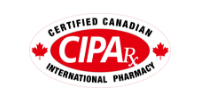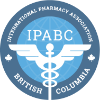Table of contents:
Indications
Tear gel is available over-the-counter eye gel designed to stay in the eye longer, providing longer-lasting relief for dry, irritated eyes. Tear gel can be used to help relieve dryness of the eyes. It is a clear, viscous gel that spreads rapidly over the conjunctiva and cornea, forming a protective film with a long corneal contact time.
Use and Dosage
Tear Gel is for external use only. Use it in the dose and duration as advised by your doctor. Check the label for directions before use. Hold the dropper close to the eye without touching it. Gently squeeze the dropper and place the medicine inside the lower eyelid. Wipe off the extra liquid.
To use tear gel, follow these general steps:
- Wash your hands thoroughly before using the eye gel.
- Remove the cap from the eye gel tube.
- Tilt your head back or lie down, then gaze upward.
- Using your index finger or a clean tissue, gently pull down your lower eyelid to form a pocket.
- Squeeze a small amount of tear gel (usually a 1/4-inch strip or less) into the pocket.
- Release your lower eyelid and close your eye.
- Keep your eyes closed for 1-2 minutes to allow the gel to spread over the eye surface.
- If you are using other eye medications, wait 5-10 minutes before applying them after using the tear gel.
- Replace the cap on the tube and store the eye gel at room temperature.
Follow the instructions provided with the specific tear gel you are using, as different brands may have slightly different instructions or dosages. Additionally, if you experience any side effects or your symptoms do not improve after using the eye gel, contact your healthcare provider.
Side Effects
Common Side Effects of Tear Gel (Eye lubricant - non-Rx):
- Application site reactions (burning, irritation, itching and redness)
- Blurred vision
- Eye pain
- Headache
- Itching/stinging
- Redness in and around the eyes
- Skin rash
- Crusting of eyelids
Serious Side Effects of Tear Gel (Eye lubricant - non-Rx):
- Severe headache, confusion, slurred speech, arm or leg weakness, trouble walking, loss of coordination, feeling unsteady, very stiff muscles, high fever, profuse sweating, or tremors;
- Serious eye symptoms such as sudden vision loss, blurred vision, tunnel vision, eye pain or swelling, or seeing halos around lights;
- Serious heart symptoms such as fast, irregular, or pounding heartbeats; fluttering in your chest; shortness of breath; sudden dizziness, lightheartedness, or passing out.
Forms and Strength
Tear Gel (Eye lubricant - non-Rx) is available in the following forms and strength:
Tear Gel: Eye Gel
- No dose
Cautions
- Make sure to follow the product instructions carefully. Overuse or misuse of the product may cause other eye problems.
- Some brands of eye drops are subject to recall due to potential bacterial contamination, check any recent recalls or warnings before using tear gel.
- People who are hypersensitive to components in the product should avoid using it.
- Side effects may include blurred vision, eye discomfort, stinging, and redness.
- Tear gel may not be suitable for everyone, especially those with underlying health conditions, consult with a healthcare professional before using it.
- If you experience persistent or severe eye dryness or other symptoms, seek medical advice.
- Avoid touching the tip of the dropper or tube to your eye or any other surface as this may contaminate the product.
- Tear gel may affect the performance of contact lenses, remove contact lenses before using the product.
- If you experience an allergic reaction or other adverse reaction to the product, such as swelling or itching, stop using it immediately and seek medical advice.
- Tear gel should be stored in a cool, dry place and should not be used beyond its expiration date.
Frequently Asked Questions (FAQ)
How is Tear Gel different from other artificial tears?
Tear Gel is more viscous than regular artificial tears, which can make it more effective at treating severe dry eye symptoms. It may also last longer on the eye.
How do I use Tear Gel?
Tear Gel should be applied to the eye in the same way as regular artificial tears - by tilting your head back slightly and applying one or two drops to the corner of your eye. You should then blink several times to help spread the gel evenly over the surface of your eye.
Can Tear Gel be used with contact lenses?
Tear Gel may be used with contact lenses, but you should remove your lenses before using the gel and wait at least 15 minutes before putting your lenses back in.
Should I use eye gel in the morning or night?
Applying it in the morning, then putting more products on top of it, makes it harder for it to absorb into the skin and can make those other products dissolve more easily. That's why it's best to use eye creams at night, Bartlett says.
Resources
It's important to purchase Tear Gel from verified Canadian pharmacy.







REVIEWS